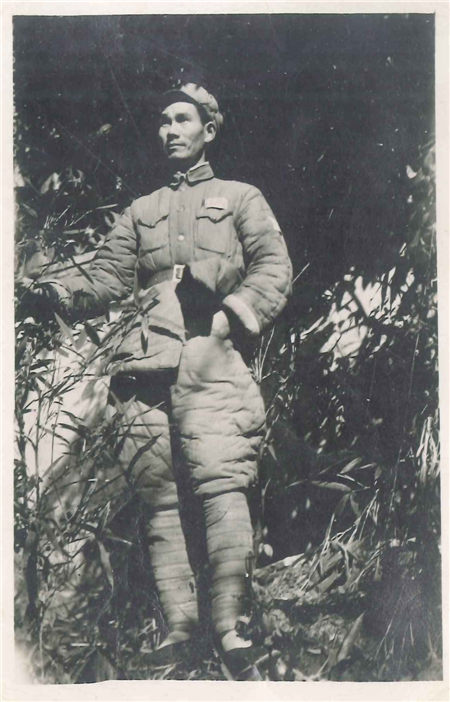 |
|
A file photo of Dong in the war years. Provided to China Daily |
Conditions improved after the division arrived in Shanxi province in late 1939, a relatively stable period. More students joined the class, and more teachers and study materials were provided. Lessons also became more complex.
The students had to walk about 20 kilometers to carry back tens of kilograms of food or coal on their backs each day. "We set out very early in the morning so we could have time for classes in the afternoon," Dong says.
The division established its own hospital in 1941 in the wake of the famous Hundred Regiments Battle of 1940. About 20 cave rooms served as bed wards, each housing four or five patients; four more cave spaces served as operation rooms. There were only five doctors, who were also teaching medicine.
The period from 1940-41 was hard, with little food.
"However, we all had high enthusiasm," Dong says, adding that he developed a strong interest in medical studies at the time. The students collected bones from graves in the field and used them to study anatomy. They also had some simple medical equipment by then.
As a student, Dong often heard inspiring stories about He Long and Canadian doctor Norman Bethune (1890-1939), who once worked in the division. After earning his medical degree in 1941, Dong served at the division hospital and witnessed the cruelty of war. Two of his classmates lost their lives on the frontlines.
Conditions were poor in hospitals in the rear areas. Medicines and equipment were severely inadequate.
"The soldiers were happy to tell us about their situations and stories of the frontlines," Dong says, recalling the equation between medics and those they treated.
Dong and his colleagues tried all known means-and sometimes ingenuity-to treat the wounded. For example, to treat ulcers in the lower legs suffered by many soldiers then, they even attempted skin grafts. That didn't work, but Dong finally applied hot compression to improve the blood flow, and that worked on some patients.
Another time, a patient was in great pain due to a tumor in a subclavian artery in his chest and needed urgent surgery. But the main surgeon was away, so Dong and his colleagues jumped in to operate, facing the great risk of unstoppable bleeding in case of accident. One of them had his autopsy textbook at the bedside for reference.
Lacking proper equipment, they tied a rope around the patient to prevent bleeding before making an incision to ease pressure from the tumor. The patient got relief and recovered.
Dong says much of the team's knowledge came not from books but actually working on patients.
The military hospital also treated many local civilians for free, he adds.
Later, Dong served as a surgeon on the battlefieds of Korea in the early '50s. Since then, Dong worked in several hospitals and research organizations before he retired as the deputy director of Chinese Academy of Medical Sciences in 1985.